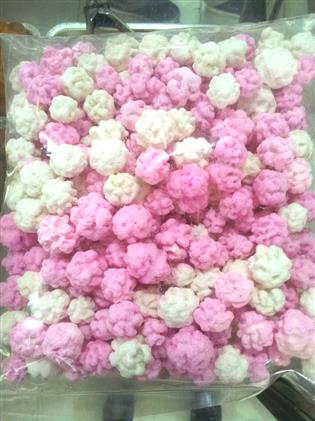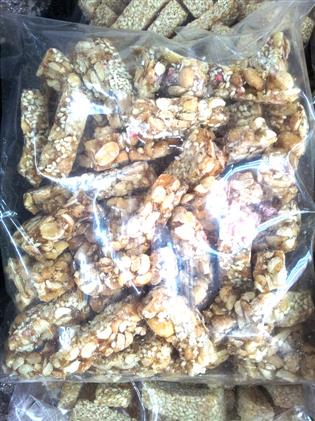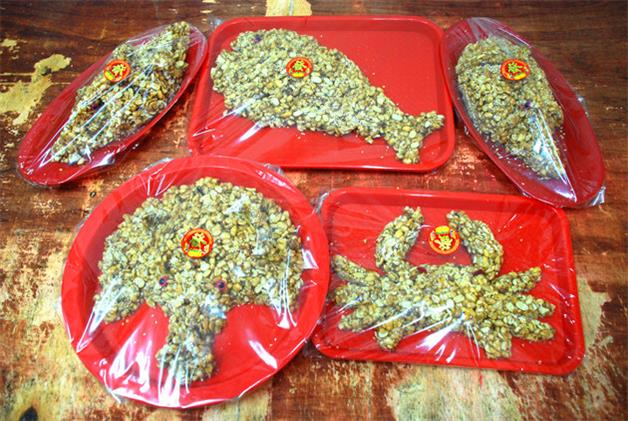
Cool cakes and pastries of Grandpa’s time
By Joanna Yeo - Monday, Oct 22, 2012
Cool and functional snacks and cakes to you can mean macaroon, tiramisu and uber decadent chocolate-coated biscuit sticks. But it was something else back in the day of grandpa’s era. They had stuff which are now slowly making its way to the lost and forgotten food section of our food museum. A 60 year old traditional cake legend Thye Moh Chan shuttered down for good last year and it was bye bye to one of the best old school mooncakes and sesame crumbles around. Fortunately, a handful are still around and make their stuff fresh daily.
We visited one of the last few remaining traditional pastry shops, 60 year-old Teochew pastry shop, Sze Thye Cake Shop to find learn more about this fading food tradition.
Sze Thye sells a variety of traditional handmade Chinese pastries from the more common ones like Tau Sa Piah (bean paste pastry) to rarer ones that cannot be found in most cake shops such as Wu Sheng (five types of animal-shaped peanut candy)
Owner, Mr Koh Sun Ling says his customers are an eclectic mix of folks from different dialects such as Teochew, Hokkien, Catononese and Hainan, most of them in their 40s and above. All of them have different reasons for buying his pastries and cakes. Some are order requests made by temples for their religious occasions, gifts for traditional Chinese weddings and most, are just for fun snacking. Mr Koh says that just like fruits, most of the traditional pastries are also used as offerings to the Gods.
Customer, Mr Andrew Teo, 61 says whenever he gets the opportunity to pass by such a traditional hand made Chinese pastry shop, he will purchase some as such shops are getting rarer and dying out very soon. He adds that most people in the current generation such as his 16 year old son, do not appreciate such traditional pastries as they find the taste odd. It’s true, if you are a dull foodie, but these flavours do grow on you as they are made of stuff we consume regularly like flour, sugar, sesame seeds, peanuts, oil, animal fat, salt, malt etc…they are just made “differently”, as opposed to the new normal “usual” stuff that floods our supermarket today.
Due to the laborious nature of hand making these traditional Chinese pastries, many of these shops find it hard to appoint successors to carry on this tradition, says Mr Teo. Take Mr Koh for instance- he is unable to find a helper or a successor due to the long hours and labourious nature of the work. He has been managing the entire shop and pastry production singlehandedly every single day of the year (except the first day of Chinese New Year, when he closes) for at least 12 hours a day. If no one inherits the baton of this food heritage, then we are all stuck with macarons, cupcakes, chocolate something and perhaps fancy nougats as sweet treats at that next wedding ritual.
But before that ever happens (touch wood), let’s look at what interesting old school snacks will miss in time to come. These are still available, albeit rarely, today.
Sugar sculptures
Made with sugared water and red colouring, these animals and building structures are not exactly candies or pastries that customers buy back to snack on. Instead, they are used as offerings to pray to Chinese Gods during occasions like the God’s birthday.
Usually in sets of three known as ‘san shou’ consisting of a pagoda, a dragon and a phoenix or a set of five called ‘wu shou’, which includes an elephant and a lion.
Mr Koh says instead of throwing the sculptures away after praying, some will knock it apart and use it as sugar to make red or green bean soup.
Su Sha (Teochew)/ Tian gong li (Hokkien)

Surprisingly, apart from the Chinese using them for prayers and offerings, these sugary balls are also used by the Indians during their weddings and funeral rituals.
Chun Zao
These are deep fried flour sticks coated with the bits of su sha. The Hainanese have a similar snack that uses glutinous rice flour instead of plain flour for the dough sticks, and have both sugar and non sugar-coated versions, says Mr Koh. In the past, they were used to serve guests when they come visiting during Chinese New Year.
Hua Sheng Tang

These peanut candies are sweetened and textured with sugar and maltose. This is possibly the most common of these old traditional snacks and is still quite easily available.
Wu Sheng

These are like hua sheng tang but hand-moulded into five different animal shapes: chicken, duck, pig’s head, fish and crab. These are used as offerings during big occasions such as the God’s birthday or during Hungry Ghost Festival.
Zi Che Gor
Zi che gor means book candy in Teochew. Mr Koh jokingly says that if kids eat these they will become brainier at their schoolwork. Unlike the block-like zi che gor that you find at other bakeries, this is the original type that cuts the pastry into smaller strips so that it resembles the pages of a book.
San Se Mian Qian
This literally translates as “three colours in front”. These comes in a set of three pastries that is made up of a large piece of hua sheng tang, a peach and deer-shaped pastry. These are made upon special request from the temple to be given out as a form of appreciation to those that have donated to the temple.


